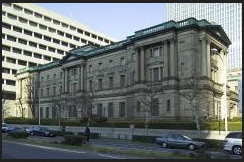Editor’s Note: Interest rates and inflation are certainly connected to efforts on the parts of central banks to loosen and tighten the money supply. These relationships, however, are much more complex than many people suppose. As we’ve seen in recent weeks, with constant talk about what the Fed will do next, expectations are an important factor in how markets respond to central bank actions. In his article “Ten Great Economic Myths,” Murray Rothbard addresses some of these issues. Myth 4: Every time the Fed tightens the money supply, interest rates rise (or fall); every time the Fed expands the money supply, interest rates rise (or fall). The financial press now knows enough economics to watch weekly money supply figures like hawks; but they inevitably interpret
Topics:
Murray N. Rothbard considers the following as important: 6b) Mises.org, Featured, newsletter
This could be interesting, too:
RIA Team writes The Importance of Emergency Funds in Retirement Planning
Nachrichten Ticker - www.finanzen.ch writes Gesetzesvorschlag in Arizona: Wird Bitcoin bald zur Staatsreserve?
Nachrichten Ticker - www.finanzen.ch writes So bewegen sich Bitcoin & Co. heute
Nachrichten Ticker - www.finanzen.ch writes Aktueller Marktbericht zu Bitcoin & Co.
 Editor’s Note: Interest rates and inflation are certainly connected to efforts on the parts of central banks to loosen and tighten the money supply. These relationships, however, are much more complex than many people suppose. As we’ve seen in recent weeks, with constant talk about what the Fed will do next, expectations are an important factor in how markets respond to central bank actions. In his article “Ten Great Economic Myths,” Murray Rothbard addresses some of these issues.
Editor’s Note: Interest rates and inflation are certainly connected to efforts on the parts of central banks to loosen and tighten the money supply. These relationships, however, are much more complex than many people suppose. As we’ve seen in recent weeks, with constant talk about what the Fed will do next, expectations are an important factor in how markets respond to central bank actions. In his article “Ten Great Economic Myths,” Murray Rothbard addresses some of these issues.
Myth 4: Every time the Fed tightens the money supply, interest rates rise (or fall); every time the Fed expands the money supply, interest rates rise (or fall).
The financial press now knows enough economics to watch weekly money supply figures like hawks; but they inevitably interpret these figures in a chaotic fashion. If the money supply rises, this is interpreted as lowering interest rates and inflationary; it is also interpreted, often in the very same article, as raising interest rates. And vice versa. If the Fed tightens the growth of money, it is interpreted as both raising interest rates and lowering them. Sometimes it seems that all Fed actions, no matter how contradictory, must result in raising interest rates. Clearly something is very wrong here.
The problem is that, as in the case of price levels, there are several causal factors operating on interest rates and in different directions. If the Fed expands the money supply, it does so by generating more bank reserves and thereby expanding the supply of bank credit and bank deposits. The expansion of credit necessarily means an increased supply in the credit market and hence a lowering of the price of credit, or the rate of interest. On the other hand, if the Fed restricts the supply of credit and the growth of the money supply, this means that the supply in the credit market declines, and this should mean a rise in interest rates.
And this is precisely what happens in the first decade or two of chronic inflation. Fed expansion lowers interest rates; Fed tightening raises them. But after this period, the public and the market begin to catch on to what is happening. They begin to realize that inflation is chronic because of the systemic expansion of the money supply. When they realize this fact of life, they will also realize that inflation wipes out the creditor for the benefit of the debtor. Thus, if someone grants a loan at five percent for one year, and there is seven percent inflation for that year, the creditor loses, not gains. He loses two percent, since he gets paid back in dollars that are now worth seven percent less in purchasing power. Correspondingly, the debtor gains by inflation. As creditors begin to catch on, they place an inflation premium on the interest rate, and debtors will be willing to pay it. Hence, in the long run anything which fuels the expectations of inflation will raise inflation premiums on interest rates; and anything which dampens those expectations will lower those premiums. Therefore, a Fed tightening will now tend to dampen inflationary expectations and lower interest rates; a Fed expansion will whip up those expectations again and raise them. There are two, opposite causal chains at work. And so Fed expansion or contraction can either raise or lower interest rates, depending on which causal chain is stronger.
Which will be stronger? There is no way to know for sure. In the early decades of inflation, there is no inflation premium; in the later decades, such as we are now in, there is. The relative strength and reaction times depend on the subjective expectations of the public, and these cannot be forecast with certainty. And this is one reason why economic forecasts can never be made with certainty.
Tags: Featured,newsletter








